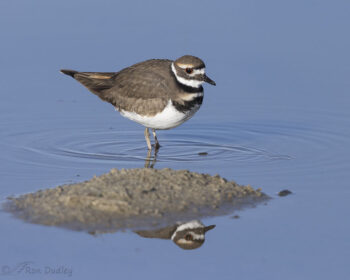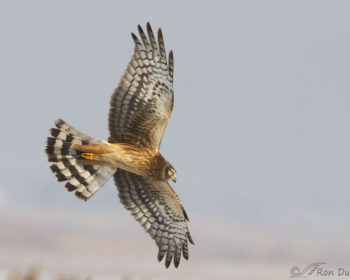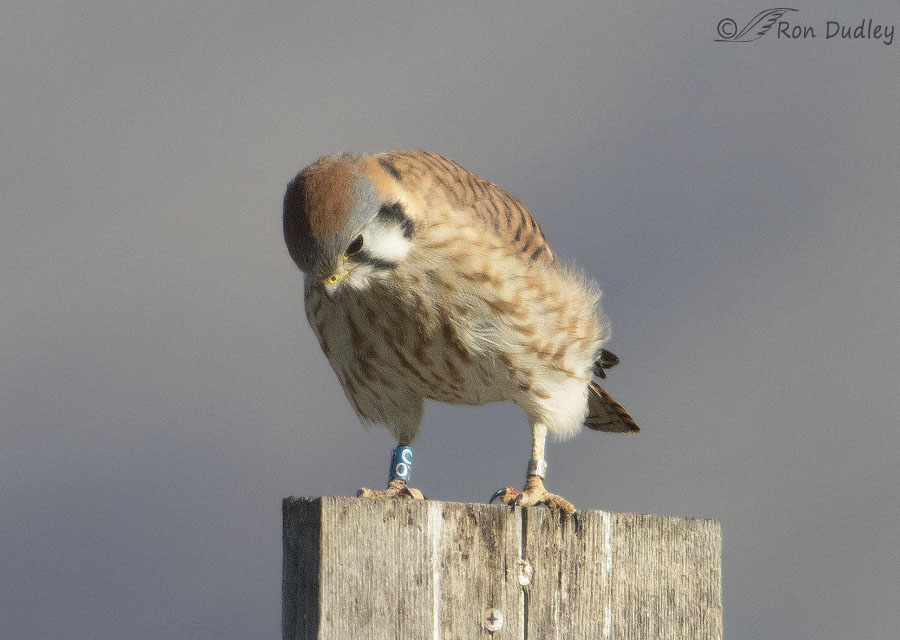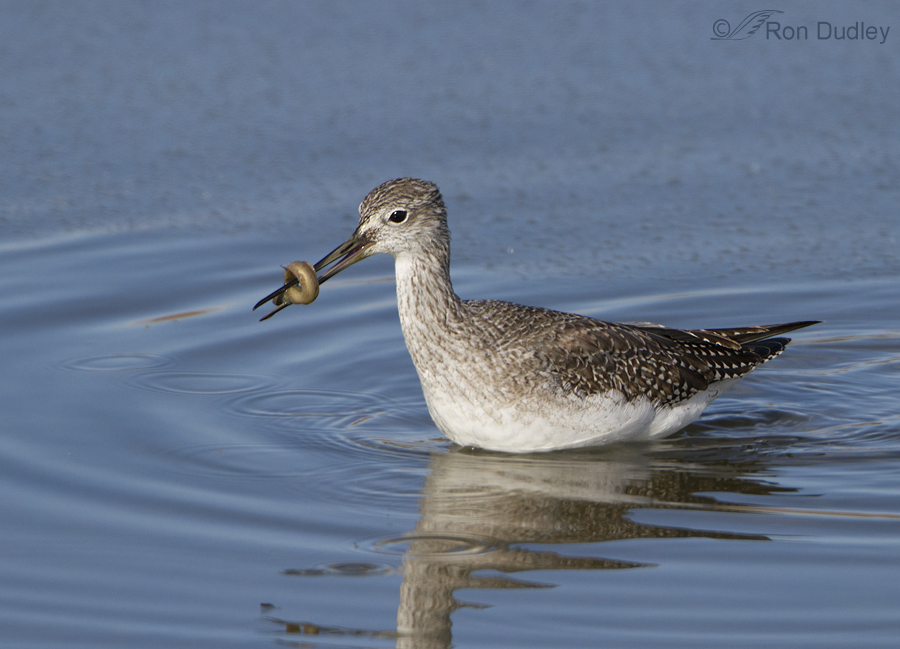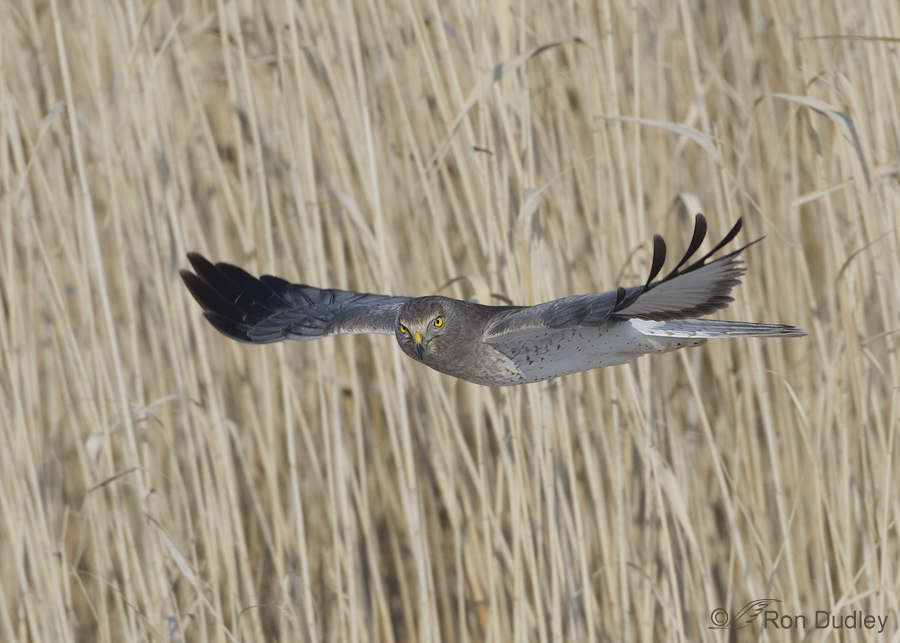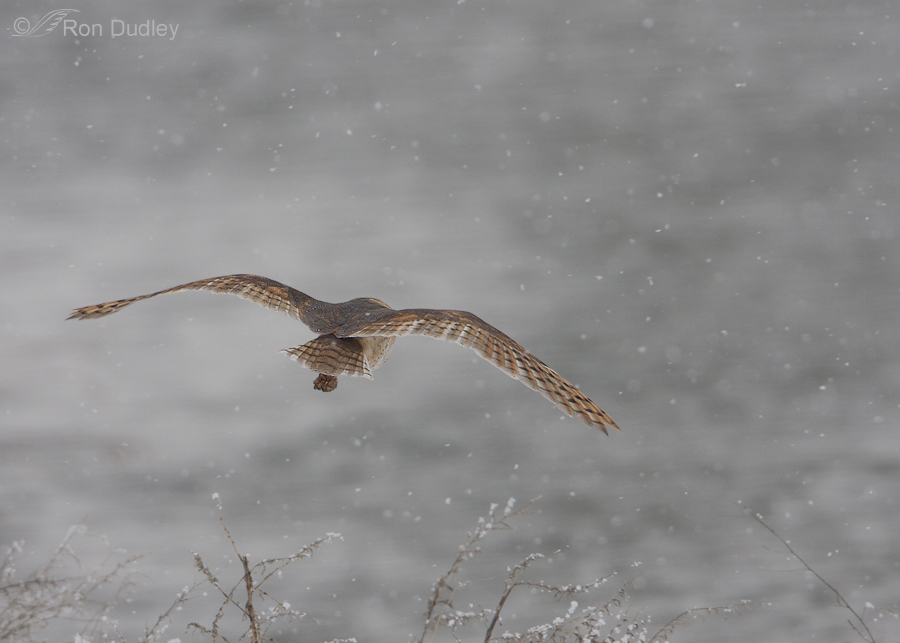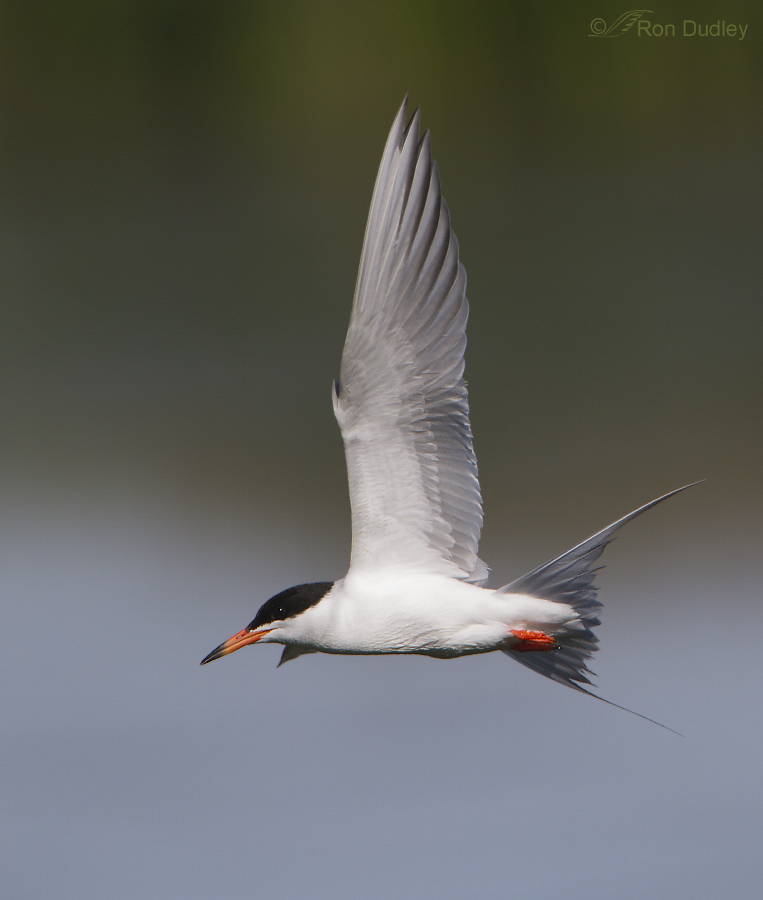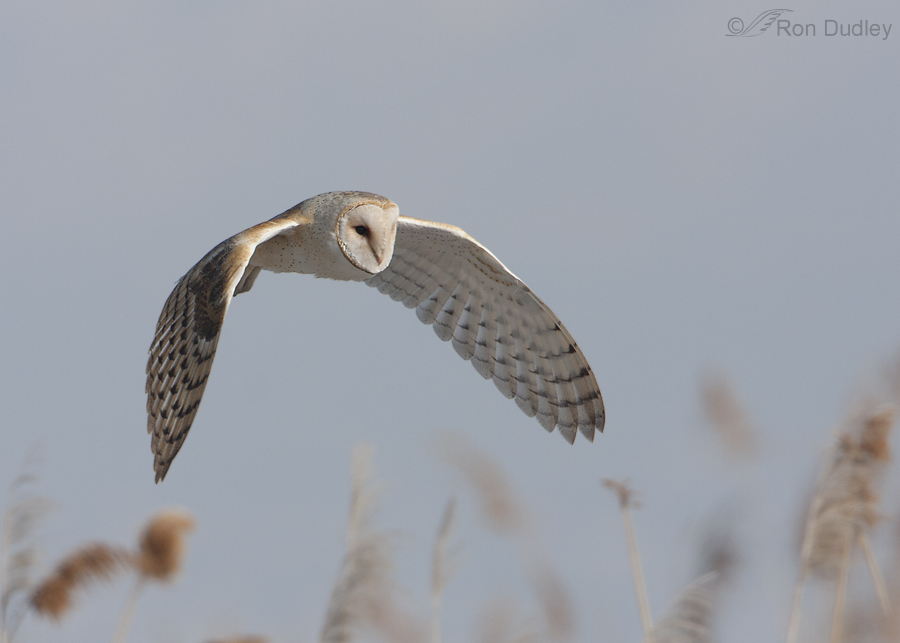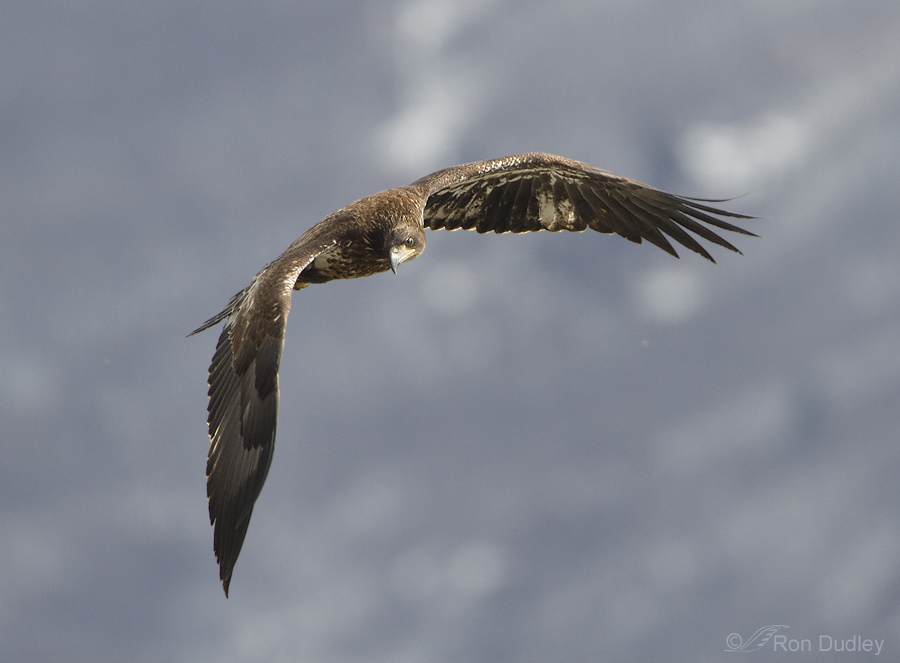Tag: Farmington Bay Wildlife Management Area
Banking Northern Harrier
A New Way To Report Banded American Kestrels
A Greater Yellowlegs And Its Weather Loach Prey
My Love-Hate Relationship With Phragmites
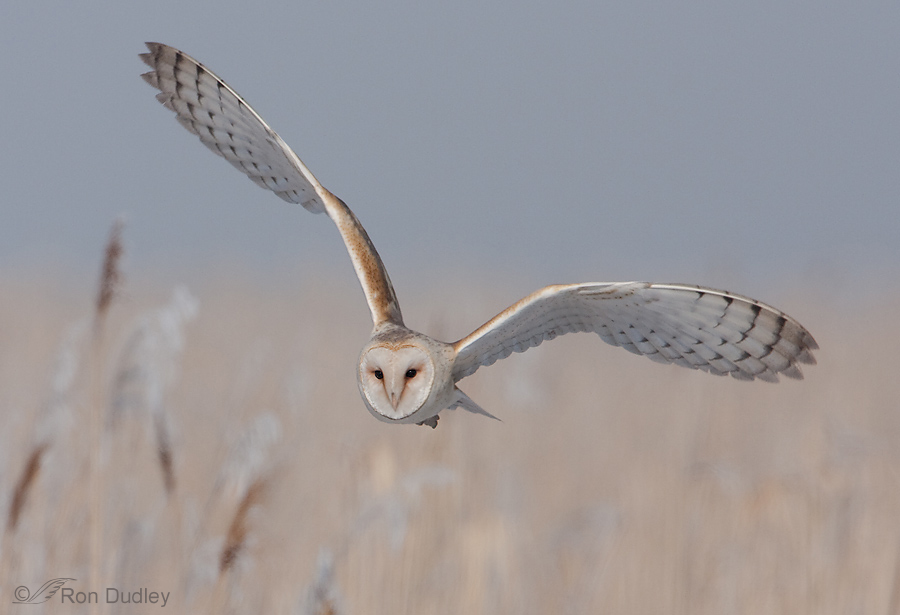
I have a complicated relationship with Phragmites. Though some strains are native to North America, much more vigorous invasive varieties from Eurasia haven taken over many of our wetlands and proven to be extremely difficult to control. Dense “reed stands” of Phragmites with their dramatic seed plumes waving in the breeze can be strikingly beautiful but they’re a huge problem in our wetlands.
Male Northern Harrier In Flight – A Lucky Shot
Barn Owl Hunting In A Heavy Snow Storm
Bald Eagle Potpourri
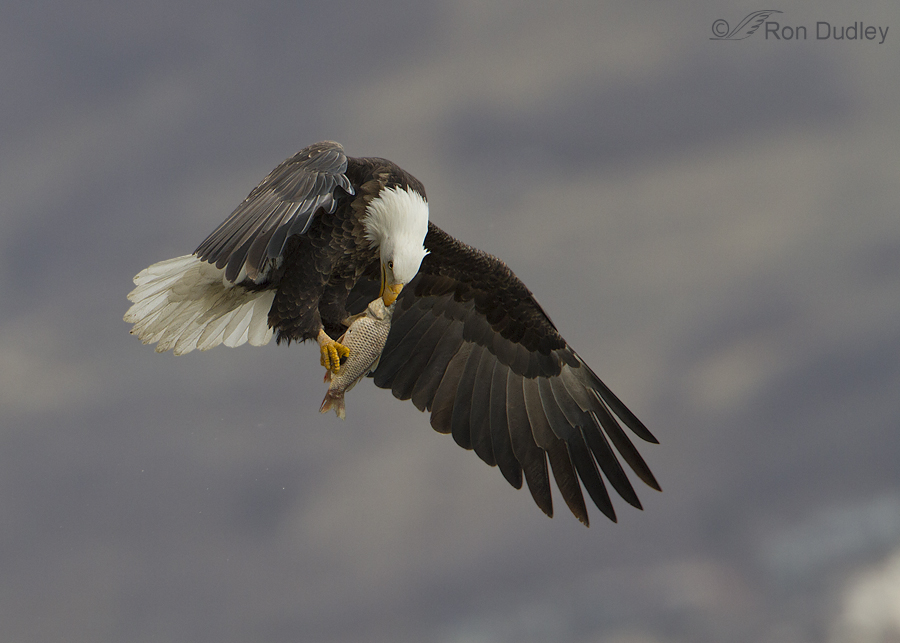
Yesterday morning I saw my first Bald Eagle of the season at Farmington Bay. It was too far away for even mediocre images but it was there! We have a small number of resident eagles in northern Utah but those few birds normally don’t hang out at Farmington this early in the season so I’m not sure if it was a wandering resident or an early migrant. Either way it was a delight to see.
As a result, when I began thinking about today’s post my mind kept returning to eagles so I thought I’d present several images taken at Farmington two winters ago.
Forster’s Tern
Barn Owl Update
A Compositional Conundrum – Immature Bald Eagle
Barn Owls On Unnatural Perches
It’s been a while since I’ve seen any Barn Owls out and about and I’m thinking they won’t be flying again during daytime until at least next winter so I decided to bid them adieu for the present with one last post for the season. I generally prefer my avian subjects on natural perches but Ingrid Tayler’s affection for birds on man-made perches in the urban landscape is beginning to instill in me a little more flexibility. Perhaps it isn’t too late for some new tricks from this old dog… 1/2000, f/7.1, ISO 500, 500 f/4, natural light, not baited set up or called in At Farmington Bay WMA there are numerous signs posted directing hunters to where they can hunt and where they cannot and those signs are favorite resting spots for hunting raptors. When I come across an owl on one of these signs I’ll typically drive on by unless there’s a possibility for take-off shots but I made an exception for this one despite the less than ideal light. 1/2000, f/7.1, ISO 500, 500 f/4, 1.4 tc, natural light, not baited set up or called in Another favorite perch is this kestrel nesting box at the top of a hill. From this elevated vantage point the birds can hunt visually over a large area without expending the energy required for flight – a significant advantage in the depths of a long, cold winter when calories are at a premium. This owl looks like it might be wary of me and about to fly, but it isn’t. It was calmly…
A Guide To Aging Bald Eagles
As we go into prime “eagle watching” season here in northern Utah I thought it might be timely to present a guide that would be helpful in aging Bald Eagles as they progress through the 5-6 year process of becoming adults. Many of these younger birds are mistakenly identified as Golden Eagles by the general public. Eagles that have not reached the adult stage are referred to as immature, juveniles or sub-adults. Plumage stages are highly variable, depending on molt sequence, age and timing so other factors like iris and beak color are also taken into account when estimating age. Eyes gradually change from dark brown to yellow while the beak goes from blackish-gray to yellow. 1/4000, f/8, ISO 500, 500 f/4, not baited, set up or called in The adult Bald Eagle is unmistakable with its distinctive bright white head and tail contrasting with the dark brown body and wings. 1/200, f/6.3, ISO 800, 500 f/4, 1.4 tc, not baited, set up or called in But juveniles present very differently than adults, especially in the early stages of development. This very young bird is barely fledged and was still hanging around its nest in sw Montana. Notice that the plumage is dark brown throughout, though they may have some white or pale mottling at this stage – especially on the underparts. Both eye and beak are very dark. 1/2000, f/6.3, ISO 500, 500 f/4, 1.4 tc, not baited, set up or called in This is a first year bird during winter. 1/800, f/8, ISO 500, 500 f/4, natural light,…
Harlan’s Hawk On A Coot Kill (graphic)
On January 18 I photographed this Harlan’s Hawk at Farmington Bay WMA. Harlan’s is a relatively rare and very dark subspecies of the Red-tailed Hawk that breeds in Alaska and northern Canada but winters in the western U.S. and the Great Plains. I posted two other shots of this bird on January 20. 1/3200, f/7.1, ISO 400, 500 f/4, 1.4 tc, natural light, not baited, set up or called in On this day I only had a few moments with the hawk before it took off. 1/2500, f/8, ISO 500, 500 f/4, natural light, not baited, set up or called in Then, on January 22, we located the bird once again within just a few yards of where it had been four days earlier. This time it was at the bottom of a creek gully feeding on a freshly killed American Coot. The angle was steep and it’s not the most attractive setting but the behavior was interesting so I took lots of photos of this juvenile, if for no other reason than documentation of an unusual bird enjoying a meal. 1/2500, f/8, ISO 500, 500 f/4, natural light, not baited, set up or called in The bird was only nervous with our presence for a few moments, then resumed eating its meal with enthusiasm. Here it has a beak-full of feathers that it had a difficult time shaking off. 1/2000, f/7.1, ISO 500, 500 f/4, natural light, not baited, set up or called in I spent over 5 minutes with this…
Ring-necked Pheasants Struggling In Deep Snow
Native to Asia, the Ring-necked Pheasant is one of the most successful introduced bird species in North America. They are exceptionally prized by hunters and may be the most studied game bird in the world. In Utah, as in much of their adopted range, their numbers are declining due to modern farming technologies and practices which are responsible for degradation of their preferred habitat (small farms with diversified crops and many patches of idle habitat). Collisions with vehicles are a major cause of pheasant mortality. In a Nebraska study, 7,195 (known) pheasants were killed by vehicles in a 439 mile section of Interstate 80 in 7 years. (I once hit a beautiful male pheasant while driving a very large U-haul truck at 65 mph. It glanced off the windshield, which definitely got my attention, then wedged in the side-mirror, which it broke. I expected to be charged for the mirror but the U-haul folks were fly fishermen and were so delighted to get the tail feathers for tying flies that they let me off with no charge). During winters with heavy snowfall and severe cold these birds require dense winter cover such as cattails in wetlands, which is part of the reason they do well at Farmington Bay WMA where these photos were taken recently. Because of the snow and bright sunshine my camera techs were all over the map and pretty meaningless so I’m not including them this time. These heavy-bodied birds are somewhat reluctant to fly so deep powdery snow presents some problems for them. Typically they push their bodies through…
Banking Northern Harrier
A New Way To Report Banded American Kestrels
A Greater Yellowlegs And Its Weather Loach Prey
My Love-Hate Relationship With Phragmites

I have a complicated relationship with Phragmites. Though some strains are native to North America, much more vigorous invasive varieties from Eurasia haven taken over many of our wetlands and proven to be extremely difficult to control. Dense “reed stands” of Phragmites with their dramatic seed plumes waving in the breeze can be strikingly beautiful but they’re a huge problem in our wetlands.
Male Northern Harrier In Flight – A Lucky Shot
Barn Owl Hunting In A Heavy Snow Storm
Bald Eagle Potpourri

Yesterday morning I saw my first Bald Eagle of the season at Farmington Bay. It was too far away for even mediocre images but it was there! We have a small number of resident eagles in northern Utah but those few birds normally don’t hang out at Farmington this early in the season so I’m not sure if it was a wandering resident or an early migrant. Either way it was a delight to see.
As a result, when I began thinking about today’s post my mind kept returning to eagles so I thought I’d present several images taken at Farmington two winters ago.
Forster’s Tern
Barn Owl Update
A Compositional Conundrum – Immature Bald Eagle
Barn Owls On Unnatural Perches
It’s been a while since I’ve seen any Barn Owls out and about and I’m thinking they won’t be flying again during daytime until at least next winter so I decided to bid them adieu for the present with one last post for the season. I generally prefer my avian subjects on natural perches but Ingrid Tayler’s affection for birds on man-made perches in the urban landscape is beginning to instill in me a little more flexibility. Perhaps it isn’t too late for some new tricks from this old dog… 1/2000, f/7.1, ISO 500, 500 f/4, natural light, not baited set up or called in At Farmington Bay WMA there are numerous signs posted directing hunters to where they can hunt and where they cannot and those signs are favorite resting spots for hunting raptors. When I come across an owl on one of these signs I’ll typically drive on by unless there’s a possibility for take-off shots but I made an exception for this one despite the less than ideal light. 1/2000, f/7.1, ISO 500, 500 f/4, 1.4 tc, natural light, not baited set up or called in Another favorite perch is this kestrel nesting box at the top of a hill. From this elevated vantage point the birds can hunt visually over a large area without expending the energy required for flight – a significant advantage in the depths of a long, cold winter when calories are at a premium. This owl looks like it might be wary of me and about to fly, but it isn’t. It was calmly…
A Guide To Aging Bald Eagles
As we go into prime “eagle watching” season here in northern Utah I thought it might be timely to present a guide that would be helpful in aging Bald Eagles as they progress through the 5-6 year process of becoming adults. Many of these younger birds are mistakenly identified as Golden Eagles by the general public. Eagles that have not reached the adult stage are referred to as immature, juveniles or sub-adults. Plumage stages are highly variable, depending on molt sequence, age and timing so other factors like iris and beak color are also taken into account when estimating age. Eyes gradually change from dark brown to yellow while the beak goes from blackish-gray to yellow. 1/4000, f/8, ISO 500, 500 f/4, not baited, set up or called in The adult Bald Eagle is unmistakable with its distinctive bright white head and tail contrasting with the dark brown body and wings. 1/200, f/6.3, ISO 800, 500 f/4, 1.4 tc, not baited, set up or called in But juveniles present very differently than adults, especially in the early stages of development. This very young bird is barely fledged and was still hanging around its nest in sw Montana. Notice that the plumage is dark brown throughout, though they may have some white or pale mottling at this stage – especially on the underparts. Both eye and beak are very dark. 1/2000, f/6.3, ISO 500, 500 f/4, 1.4 tc, not baited, set up or called in This is a first year bird during winter. 1/800, f/8, ISO 500, 500 f/4, natural light,…
Harlan’s Hawk On A Coot Kill (graphic)
On January 18 I photographed this Harlan’s Hawk at Farmington Bay WMA. Harlan’s is a relatively rare and very dark subspecies of the Red-tailed Hawk that breeds in Alaska and northern Canada but winters in the western U.S. and the Great Plains. I posted two other shots of this bird on January 20. 1/3200, f/7.1, ISO 400, 500 f/4, 1.4 tc, natural light, not baited, set up or called in On this day I only had a few moments with the hawk before it took off. 1/2500, f/8, ISO 500, 500 f/4, natural light, not baited, set up or called in Then, on January 22, we located the bird once again within just a few yards of where it had been four days earlier. This time it was at the bottom of a creek gully feeding on a freshly killed American Coot. The angle was steep and it’s not the most attractive setting but the behavior was interesting so I took lots of photos of this juvenile, if for no other reason than documentation of an unusual bird enjoying a meal. 1/2500, f/8, ISO 500, 500 f/4, natural light, not baited, set up or called in The bird was only nervous with our presence for a few moments, then resumed eating its meal with enthusiasm. Here it has a beak-full of feathers that it had a difficult time shaking off. 1/2000, f/7.1, ISO 500, 500 f/4, natural light, not baited, set up or called in I spent over 5 minutes with this…
Ring-necked Pheasants Struggling In Deep Snow
Native to Asia, the Ring-necked Pheasant is one of the most successful introduced bird species in North America. They are exceptionally prized by hunters and may be the most studied game bird in the world. In Utah, as in much of their adopted range, their numbers are declining due to modern farming technologies and practices which are responsible for degradation of their preferred habitat (small farms with diversified crops and many patches of idle habitat). Collisions with vehicles are a major cause of pheasant mortality. In a Nebraska study, 7,195 (known) pheasants were killed by vehicles in a 439 mile section of Interstate 80 in 7 years. (I once hit a beautiful male pheasant while driving a very large U-haul truck at 65 mph. It glanced off the windshield, which definitely got my attention, then wedged in the side-mirror, which it broke. I expected to be charged for the mirror but the U-haul folks were fly fishermen and were so delighted to get the tail feathers for tying flies that they let me off with no charge). During winters with heavy snowfall and severe cold these birds require dense winter cover such as cattails in wetlands, which is part of the reason they do well at Farmington Bay WMA where these photos were taken recently. Because of the snow and bright sunshine my camera techs were all over the map and pretty meaningless so I’m not including them this time. These heavy-bodied birds are somewhat reluctant to fly so deep powdery snow presents some problems for them. Typically they push their bodies through…


